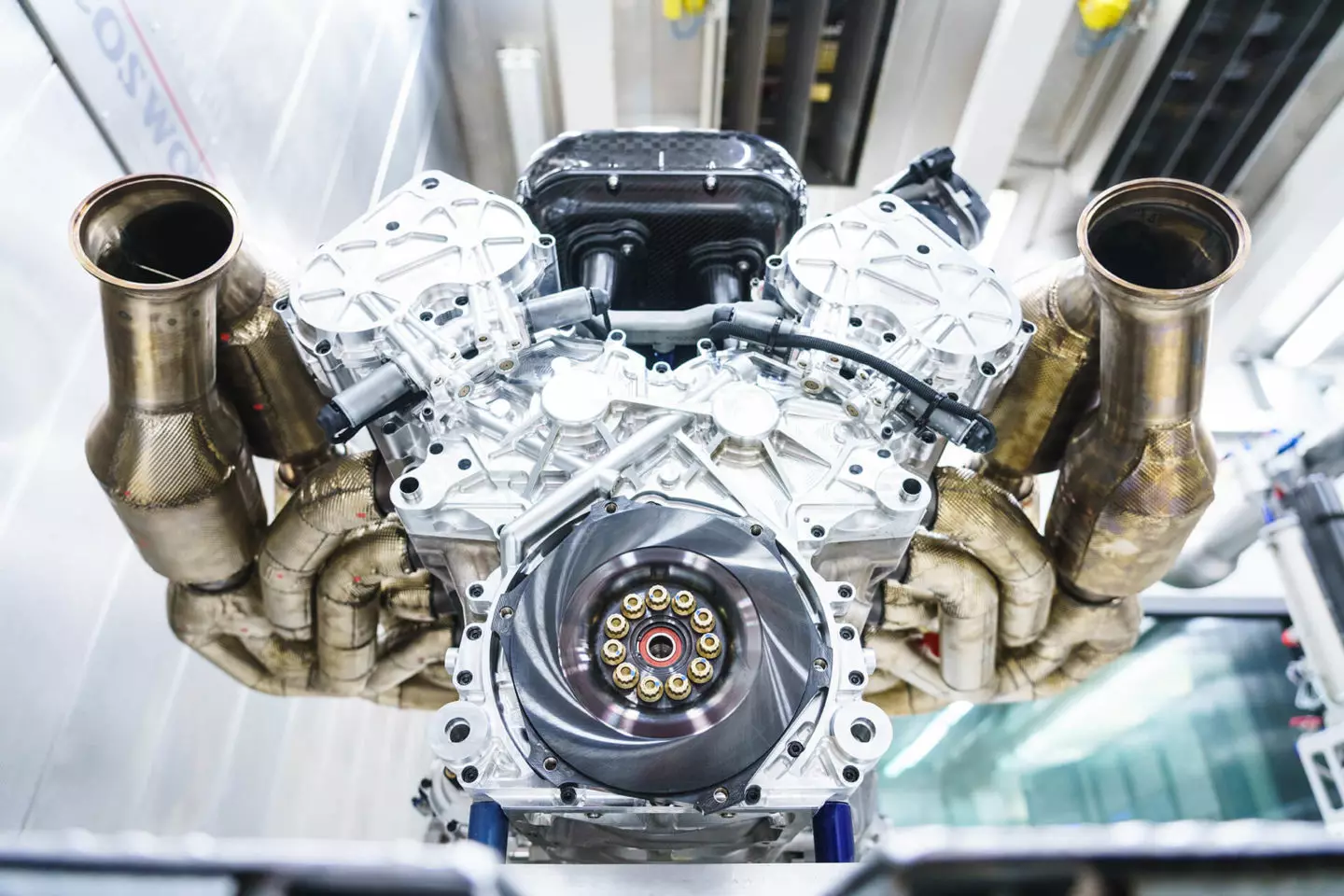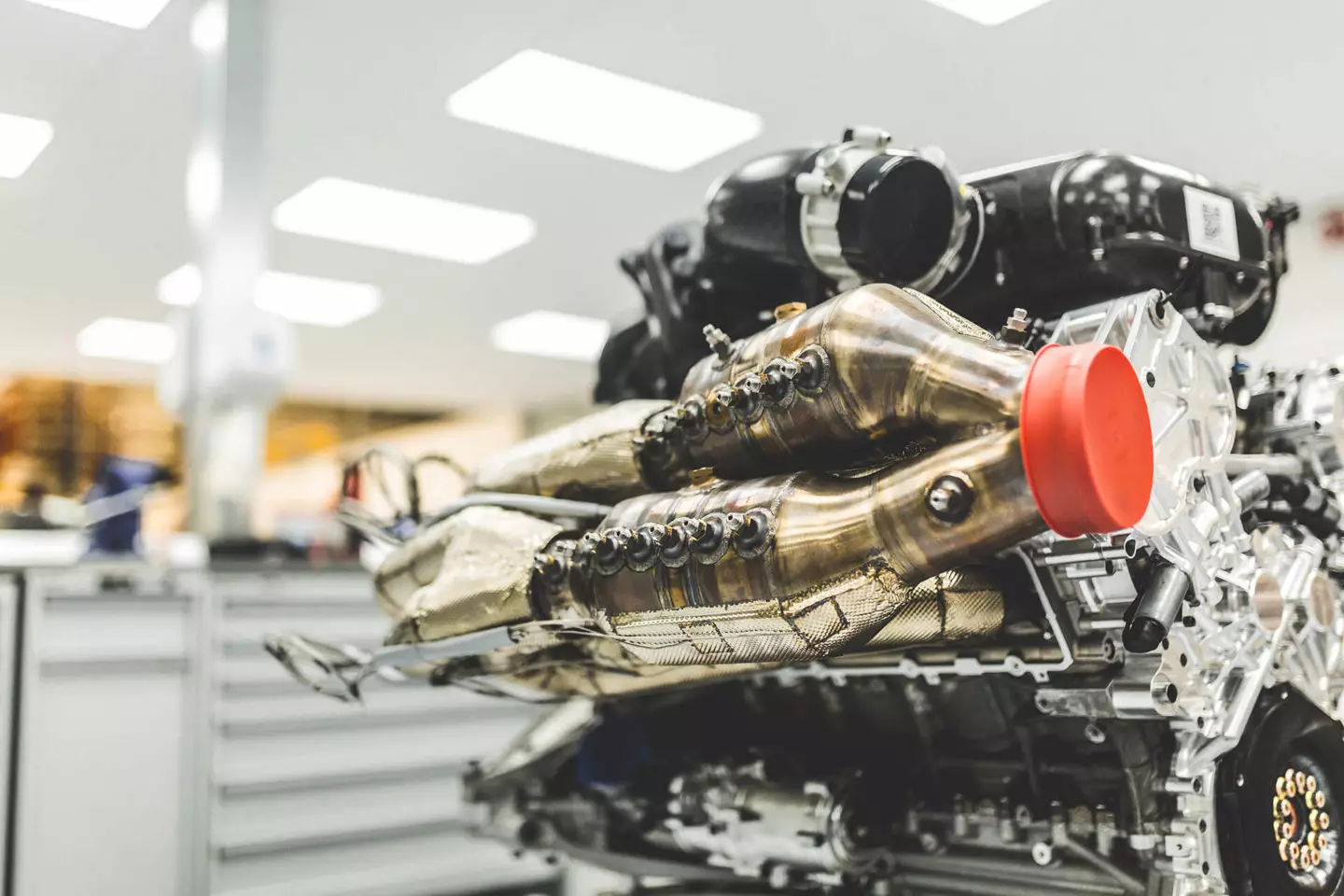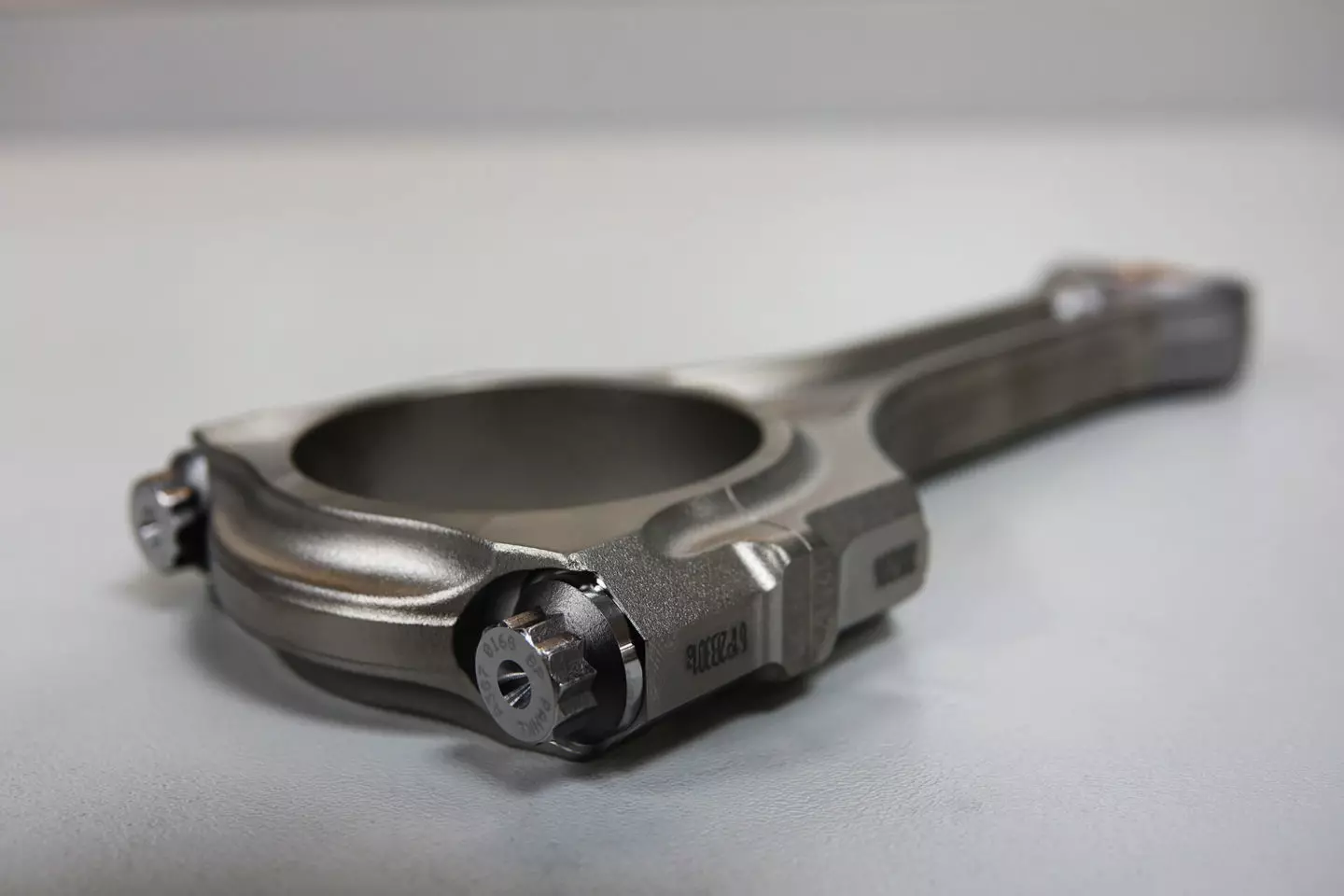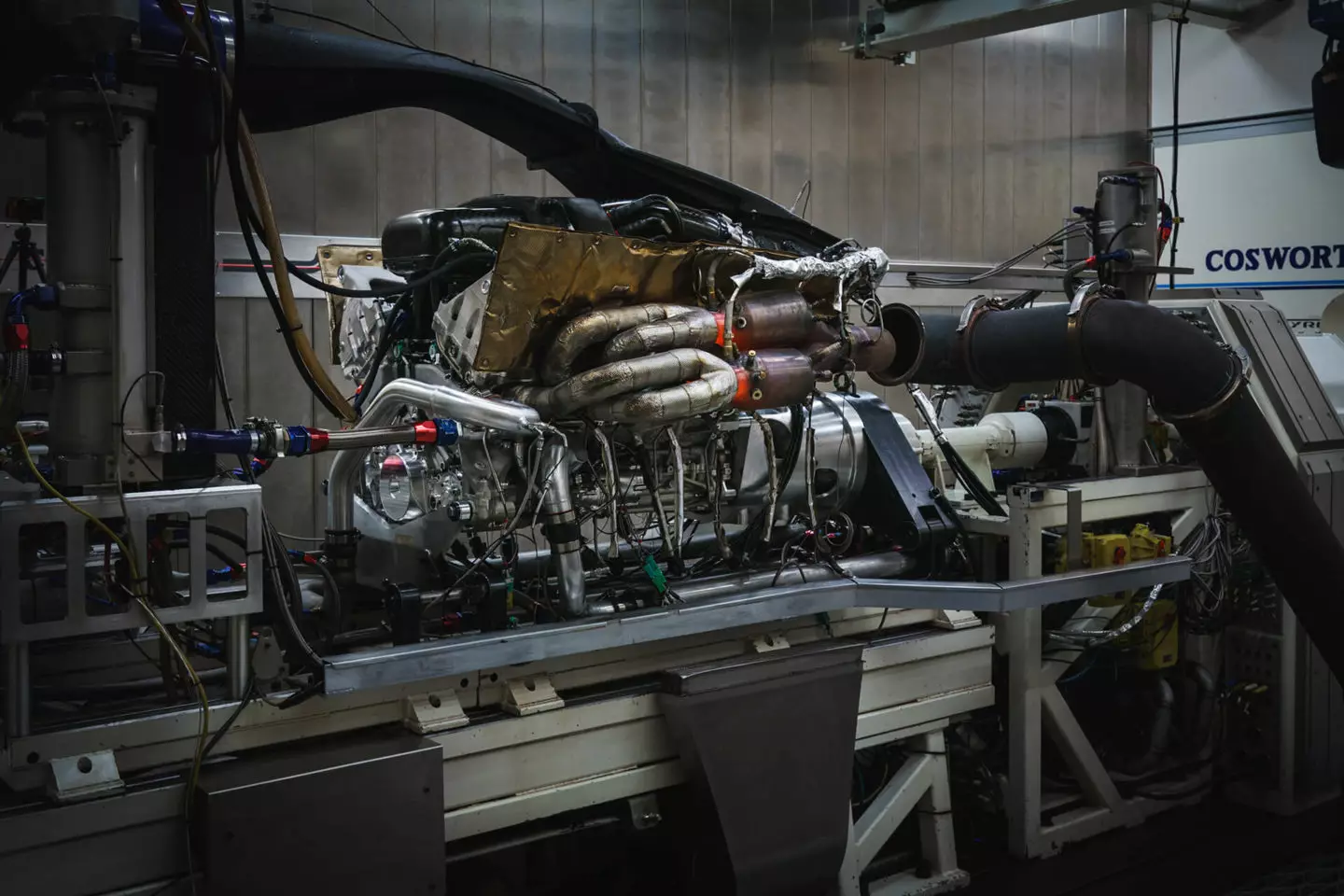We already knew that the Aston Martin Valkyrie it would have a 6500 cm3 naturally aspirated V12, but the final specs were reason for all kinds of speculation — all of them pointing to something north of the 1000 hp achieved at stratospheric regimes...
Now we have hard numbers… and it didn't disappoint!
This eccentricity of 12 cylinders arranged in a V at 65º delivers 1014 hp (1000 bhp) at a dizzying 10 500 rpm, but it continues to climb up to the limiter placed at… 11 100 rpm(!). Given the high rev ceiling where more than 1000 hp resides, it's no wonder that the maximum torque of 740 Nm is only reached at 7000 rpm…

There are 156 hp/l and 114 Nm/l, truly impressive numbers, bearing in mind that, let us not forget, there's not a turbo or supercharger in sight. . And let's not forget that this V12 complies with all anti-emissions regulations… How did they do it? Magic, it can only...
Subscribe to our Youtube channel
Compare with the numbers of naturally aspirated V12s, also with 6500 cm3 of Lamborghini Aventador and Ferrari 812 Superfast, 770 hp at 8500 rpm (SVJ) and 800 hp at 8500 rpm, respectively… engines also truly special, but the differences for the Valkyrie's V12 are… expressive

aston martinThe program anticipated a naturally aspirated engine from the start, because although turbocharging has reached maturity, and it offers significant and far-reaching benefits — especially for road vehicles — the best "driver's car" of the modern era requires an internal combustion engine. let it be the absolute pinnacle for performance, excitement and emotion. This means the uncompromising purity of natural aspiration.
ode to combustion engine
The design of the V12 of the Aston Martin Valkyrie was in the care of specialists from the renowned Cosworth, who, in addition to extracting those numbers, also managed to keep the weight of this immense block under control, despite the structural functions it performs:
… the engine is a structural element of the car (remove the engine and there is nothing connecting the front wheels to the rear!)
The result is an engine that weighs only 206 kg — as a comparison, it's 60 kg less than the 6.1 V12 of the McLaren F1, also naturally aspirated.

To achieve such low weight for such a large engine, without resorting to ultra-exotic materials that have yet to prove they can maintain their properties over time, most internal components are machined from solid blocks of material. and they are not molded — highlight the titanium connecting rods and pistons, or the steel crankshaft (see highlighting).
high-tech sculpture
How to carve a crankshaft? It starts with a solid steel bar 170 mm in diameter and 775 mm in height, which is removed excess material, undergoes a heat treatment, is machined, takes heat again, goes through several stages of sanding and finally polishing. Once completed, it lost 80% of the material from the original bar, and six months have passed. The end result is a crankshaft 50% lighter than that used in the V12 of the Aston Martin One-77.
Aston Martin says that through this method they achieve greater precision and consistency, with components optimized for minimum mass and maximum strength.
This naturally aspirated V12 seems to come from another era. The British brand uses the blaring, stratospheric Formula 1 engines of the 1990s as a reference, but with its new V12 enjoying more than two decades of developments in design, materials and construction methods — this engine is a must. Technological prowess in itself, a true ode to the internal combustion engine. However, he will not be “alone” in the task of catapulting the Aston Martin Valkyrie.
More performance… thanks to the electrons
As we enter a new driving era, that of electrification, also the 6.5 V12 of the Valkyrie will be aided by a hybrid system , although there is still no information on how it will interact with the V12, but what Aston Martin guarantees is that performances will definitely be increased with the help of electrons.

Dr. Andy Palmer, President and CEO Aston Martin LagondaFor those who have a drop of gasoline in their blood, a naturally aspirated V12 capable of high revs is the absolute pinnacle. Nothing sounds better or conveys the emotion and excitement so completely of an internal combustion engine.
And speaking of sound… Turn up the volume!
First deliveries in 2019
The Aston Martin Valkyrie will be produced in 150 units, plus 25 units for the AMR Pro, destined for circuits. Deliveries are expected to start in 2019, with an estimated base price of 2.8 million euros — it seems that all units are already guaranteed owner!
